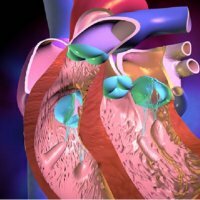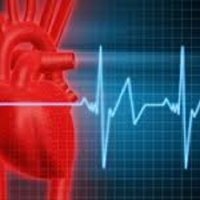Myocarditis: symptoms and treatment
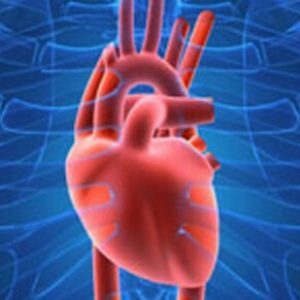
Inflammation of the heart muscle, which leads to disruption of its main functions( excitability, contractility and conductivity), in medicine is classified as myocarditis.This disease occurs quite often, is 11% of all pathologies of the cardiovascular system.But these data are approximate, since the actual occurrence of mild forms of myocarditis can not be easily traced because of asymptomatic leakage.Myocarditis can develop against the background of various infections, physical and chemical factors, in allergic and autoimmune diseases.
Viewed inflammatory process can take place in various forms:
- Galloping.Myocarditis is manifested by cardiogenic shock and severe disruption of the left ventricle.Against the background of this lesion, numerous foci of acute inflammation occur, in some cases, destruction of cardiomyocytes is also observed.
If qualified medical care for transient myocarditis will be provided on time, then recovery and complete tissue repair is possible.
- Acute.A characteristic manifestation of this form of the inflammatory process under consideration will be cardiac insufficiency against the background of active border myocarditis.The patient should be provided with qualified medical care, but even in this case there will not be a complete restoration of the tissues.
- Chronic active.Myocarditis combines all of the above signs, the progression of the pathological process is accompanied by the appearance of cardiomyopathy.Even after the passage of a full course of treatment, inflammatory foci are preserved, and in the tissues specialists discover fibrosis and giant cells.
symptoms of myocarditis
first 7-10 days considered inflammatory asymptomatic, but then the patient will submit the following complaint:
- increased sweating;
- temperature increase to subfebrile indicators;
- fast fatigue;
- asthenization;
- shortness of breath;
- heart palpitations;
- periodic non-intensive pain in the chest.
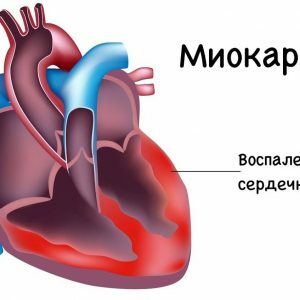 is worth noting that the above symptoms are non-specific and specific to myocarditis patients do not even suspect that the inflammation in heart tissue. It is noteworthy that at the beginning of the disease only asthenic disorders are noted - the patient becomes excessively irritable, crying, his sleep is disturbed. A few days after these disorders, there is pain in the region of the heart, which can be of different duration and intensity, but never related to stress.Before the next attack of pain begins, a person feels shortness of breath, palpitations.
is worth noting that the above symptoms are non-specific and specific to myocarditis patients do not even suspect that the inflammation in heart tissue. It is noteworthy that at the beginning of the disease only asthenic disorders are noted - the patient becomes excessively irritable, crying, his sleep is disturbed. A few days after these disorders, there is pain in the region of the heart, which can be of different duration and intensity, but never related to stress.Before the next attack of pain begins, a person feels shortness of breath, palpitations.
If myocarditis occurs without disturbances in the operation of the left ventricle, then the disease generally progresses without clear cardinal symptoms.In the case of existing left ventricular dysfunction, the development of myocarditis will be accompanied by shortness of breath, fatigue and unpleasant sensations in the region of the heart.Much rarer, but there are place to be increased venous pressure, peripheral edema.
Examinations
most often considered a disease diagnosed as "suspected inflammation of the heart muscle."Diagnosis of pathology is based on the testimony of the electrocardiogram, measurement of the size of the heart( it will be increased), the presence of acute / congestive heart failure.In addition, during the examination of a patient with suspicion of myocarditis, muffling and appearance of 3 and 4 cardiac tones, systolic murmur at the apex of the heart( not associated with 1 tone) may be noted.
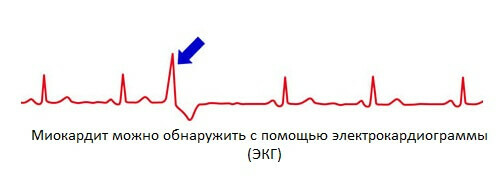
Echocardiography expediently carried out only in severe cases of myocarditis, as it is in such a state examination will yield results. Echocardiography will show:
- enlargement of the cavity predominantly of the left ventricle;
- reduction of the ejection fraction;
- decrease in the contractile function of the heart muscle;
- intracardiac thrombi.
Chest x-rays are also rarely performed, but if this is done as part of a prophylactic examination of the patient, the doctor will be able to detect an increase in heart size and signs of partial pulmonary stasis, which will make it possible to detect myocarditis at an early stage of progression.
Laboratory blood tests are also conducted-general and biochemical analyzes show an increase in ESR, an increase in C-reactive protein, troponin, and fibrinogen.Be sure to conduct an immunological analysis of blood, which allows to detect an increase in the level of circulating immune complexes, antibody titre to the membranes of tissue cells and myocardial proteins, a decrease in the number of T-lymphocytes and a change in the state of neutrophils and monocytes.
The intracardiac( endomyocardial) biopsy is considered the most accurate method of diagnosing the disease under consideration, but it is performed only in cases of very severe myocarditis.
Note: is difficult to diagnose "myocarditis" very hard, therefore doctors attach great importance to regular preventive examinations, thanks to which the specialist can see pathological changes at the very beginning of their development.
Treatment of myocarditis
The tactics for treating the disease in question are determined only by the severity of its course: if the patient has a moderate and severe form of myocarditis, then the treatment will only take place in a stationary setting, but in mild form myocarditis can also be treated as an outpatient.
Unfortunately, there is no clear algorithm of therapy for myocarditis - a doctor can prescribe both medication and a specially developed diet. But there are general principles of treatment of the disease in question:
- therapy that "works" against the source of inflammation or reduces its effect.If the causative agent of the pathology is clarified, then appropriate medications are selected: antibacterial, antiviral, antiparasitic;
- anti-inflammatory non-specific therapy: indomethacin, glucocorticoids, voltaren, ibuprofen, prednisolone;
- therapy is symptomatic.
Infectious myocarditis
 The cause of its development are pathogenic bacteria that have infiltrated the myocardium.Most often it is a complication of diseases of the upper respiratory tract.The development of infectious myocarditis begins with the breakdown of muscle fibers and the accumulation of plasmocytes and monocytes in these places.These foci are eventually replaced by a connective tissue, which leads to the progression of cardiosclerosis and the appearance of compensatory hypertrophy of the myocardium.The posterior wall of the atria, the area of the cardiac septum and the apex of the heart are the most vulnerable to this pathological lesion.
The cause of its development are pathogenic bacteria that have infiltrated the myocardium.Most often it is a complication of diseases of the upper respiratory tract.The development of infectious myocarditis begins with the breakdown of muscle fibers and the accumulation of plasmocytes and monocytes in these places.These foci are eventually replaced by a connective tissue, which leads to the progression of cardiosclerosis and the appearance of compensatory hypertrophy of the myocardium.The posterior wall of the atria, the area of the cardiac septum and the apex of the heart are the most vulnerable to this pathological lesion.
Please note! Infectious myocarditis often turns into serous or serous-fibrous pericarditis, since the inflammatory process has the property of rapidly spreading to the pericardium.
If the lesion of the myocardium is bacteriological in nature, then multiple abscesses are formed, which contain staphylococci, streptococci and other pathogenic microorganisms.Diagnostic measures are carried out according to the classical scheme described above.Treatment is carried out on an individual basis, but in the first weeks of categorically contraindicated the appointment of nonspecific anti-inflammatory drugs and glucocorticosteroids.
Allergic myocarditis
In fact, it is the body's response to the long-term exposure to the allergen.Pathology develops most often in the right heart and interventricular septum.Inside the lesions, myofibrils are destroyed, lymphocytes enter and accumulate there, and the inflammation focus itself will look like a dense bundle.If qualified treatment is not available for a long time, then diffuse cardiosclerosis and dystrophic changes in muscle fibers can form.
Idiopathic myocarditis
This disease has an unexplained etiology, characterized by a combination of myocarditis and heart failure, intense rhythm and conduction disorders, the formation of thrombi.It is idiopathic myocarditis often acute with a fatal outcome.In the inflammatory fluid, lymphocytes, granulocytes and giant cells are detected.
The clinical picture in the form of myocarditis is not clear, therefore, diagnosis is difficult.Treatment is symptomatic.
Myocarditis in childhood
If a child has heart failure but no congenital heart disease, doctors immediately begin to suspect myocarditis. Viruses, bacteria and other infections can most often provoke the development of the disease in childhood. But there are other reasons:
- allergic diseases;
- leukemia;
- connective tissue diseases;
- Kawasaki syndrome;
- metastasis of malignant tumors;
- chemical or physical effects.
It is very difficult to diagnose myocarditis in children, because the clinical picture is not very symptomatic.
Treatment of myocarditis in children should be carried out in accordance with the following rules:
-
 strict bed rest for at least 12 hours a day;
strict bed rest for at least 12 hours a day; - strictly dosage physical exercise;
- administration of non-hormone anti-inflammatory drugs;
- administration of antibiotic therapy( penicillin series);
- detection and elimination of the underlying disease;
- treatment of heart failure.
Modern medicine in most cases inflammation of the myocardium successfully heals, moreover, no morphological or physiological consequences for the body are noted.Due to the fact that physicians use modern methods of laboratory and instrumental research in the framework of diagnostics, severe forms of the disease that end in a lethal outcome for the patient are extremely rare.However, timely detection of the inflammatory process in the myocardium is very important, therefore, preventive examinations must be carried out at least once a year.
Tsygankova Yana Alexandrovna, medical reviewer, therapist of the highest qualification category

